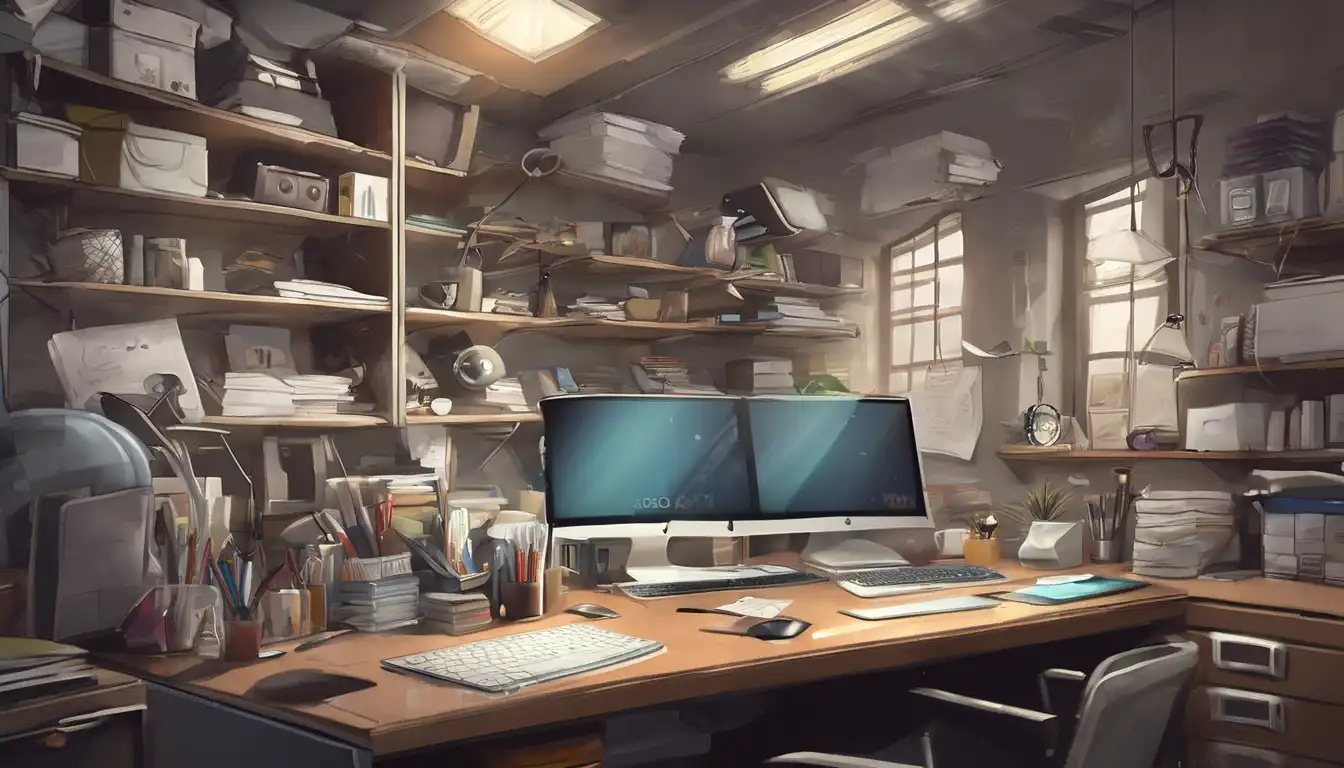Why Your Workspace Matters More Than You Think
Your physical environment plays a crucial role in your ability to concentrate and maintain productivity. Research from the Journal of Environmental Psychology shows that organized workspaces can improve focus by up to 30% compared to cluttered environments. Whether you work from home or in a traditional office setting, creating an optimal workspace is essential for achieving peak performance.
The Psychology Behind Workspace Organization
Clutter isn't just visually distracting—it creates cognitive overload that drains your mental resources. When your brain has to constantly process unnecessary visual stimuli, it has less capacity for the tasks that matter. Studies indicate that organized environments help reduce stress and decision fatigue, allowing you to conserve mental energy for important work.
The Visual Noise Effect
Every item in your field of vision competes for your attention. By minimizing visual distractions, you create mental space for deep work. This principle applies not just to physical clutter but also to digital distractions on your computer desktop and browser tabs.
7 Essential Steps to Organize Your Workspace
1. Start with a Complete Reset
Begin by clearing everything from your desk surface. This blank slate approach allows you to be intentional about what deserves a place in your workspace. Sort items into three categories: essential, occasional use, and unnecessary. Be ruthless—if you haven't used something in the past month, it probably doesn't belong on your desk.
2. Implement the Zone System
Divide your workspace into functional zones based on your workflow. Common zones include:
- Primary work zone: Keyboard, mouse, and current project materials
- Reference zone: Books, notes, and frequently accessed documents
- Supply zone: Pens, notebooks, and office supplies
- Personal zone: Photos or items that provide motivation
3. Optimize Your Digital Environment
Your computer workspace deserves as much attention as your physical one. Organize files into logical folders, clean up your desktop, and use productivity tools to minimize digital clutter. Consider implementing a digital minimalism approach to reduce unnecessary notifications and distractions.
4. Master Cable Management
Tangled cables create visual chaos and can be physically hazardous. Use cable organizers, zip ties, or adhesive clips to route cables neatly. Label each cable end for easy identification. A clean cable setup not only looks professional but also makes equipment changes much simpler.
5. Create an Ergonomic Foundation
Proper ergonomics support both physical comfort and mental focus. Ensure your chair, desk height, and monitor positioning follow ergonomic guidelines. When your body is comfortable, your mind is free to concentrate on work rather than physical discomfort.
Advanced Organization Strategies
The 5-Minute Daily Reset
Develop the habit of spending five minutes at the end of each workday resetting your workspace. This simple practice ensures you start each morning with a clean, organized environment rather than yesterday's clutter. This routine also serves as a psychological signal that the workday has ended.
Implement the One-Touch Rule
Handle each item only once when possible. When mail arrives, process it immediately rather than letting it pile up. The same principle applies to emails and digital files. This prevents accumulation and maintains organization with minimal effort.
Lighting and Atmosphere Considerations
Proper lighting is crucial for maintaining focus and reducing eye strain. Natural light is ideal, but if that's not available, invest in quality task lighting. Avoid harsh overhead lights that create glare on screens. Consider adding a small plant to your workspace—research shows that plants can improve air quality and reduce stress.
Temperature and Air Quality
Maintain a comfortable temperature (typically between 68-72°F) and ensure good air circulation. Stuffy environments can lead to drowsiness and reduced concentration. If you're interested in optimizing your entire work environment, explore our guide on creating the perfect home office setup.
Maintaining Your Organized Workspace
Organization isn't a one-time project—it's an ongoing practice. Schedule monthly reviews to reassess your setup and make adjustments as your needs change. The goal isn't perfection but continuous improvement that supports your evolving work requirements.
Weekly Maintenance Checklist
- Wipe down surfaces to remove dust
- File or discard accumulated papers
- Check and restock supplies
- Review digital file organization
- Assess what's working and what needs adjustment
The Impact on Your Work Quality
An organized workspace directly translates to better work outcomes. You'll experience fewer interruptions, make fewer mistakes, and complete tasks more efficiently. The time invested in organization pays dividends through improved focus and reduced stress. For more strategies on enhancing your productivity, check out our comprehensive productivity improvement techniques.
Getting Started Today
You don't need to overhaul your entire workspace in one session. Start with one small area—perhaps just your desk surface or a single drawer. The key is consistent progress. Even 15 minutes of organization daily can transform your workspace within a week.
Remember that the ultimate goal isn't just a tidy desk but an environment that supports your best work. Your organized workspace should feel inviting and functional—a place where you look forward to spending time and doing meaningful work.
